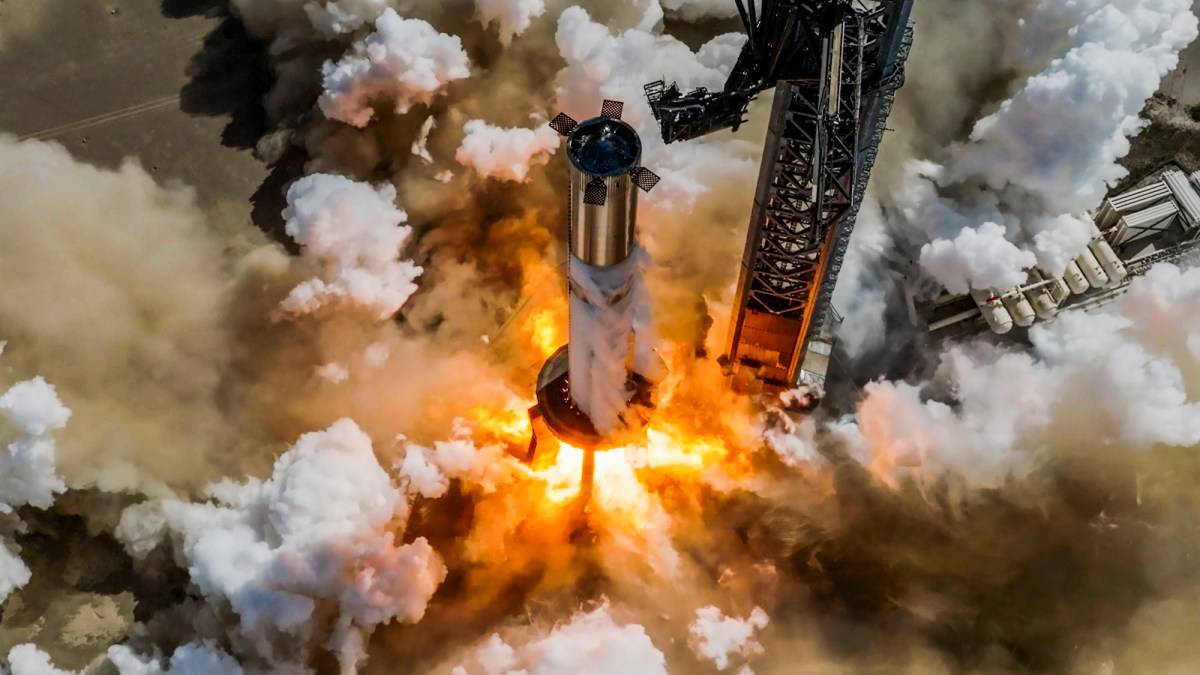SpaceX Might Attempt Starship Second Stage Tower Catch in 6 Months, Says Official.
SpaceX, the private space exploration company founded by Elon Musk, is set to push the boundaries of rocket reusability further with an ambitious plan to attempt a “tower catch†of the Starship’s second stage within the next six months. This strategy, which involves catching the descending second stage of the Starship rocket using a launch tower rather than landing it conventionally, could mark a significant advancement in space technology.
The innovative idea of a tower catch for Starship’s second stage reflects SpaceX’s commitment to efficiency and cost reduction in space travel. Starship, a fully reusable rocket, has two stages: the Super Heavy booster, which propels the vehicle out of Earth’s atmosphere, and the Starship second stage, which is designed for crewed and cargo missions to destinations like Mars and the Moon. While the first stage has been the focus of reusable landing attempts so far, the second stage’s reusability presents a new challenge that could transform orbital launches.
What Is the Tower Catch?
SpaceX’s concept of a tower catch aims to eliminate the need for traditional landing gear, which adds weight to the rocket and increases the complexity of the descent and landing process. Instead, the Starship second stage would descend vertically toward the launch tower, where two mechanical arms (often called “chopsticksâ€) would stabilize and capture it in mid-air. The tower, outfitted with these massive “chopsticks,†would cushion the Starship’s landing, ensuring it comes down gently, ready for a quick turnaround for future launches. This maneuver, if successful, could allow SpaceX to achieve rapid reusability, minimizing turnaround time and cutting costs significantly.
Technical Challenges Ahead
The plan to catch the Starship second stage using a launch tower is not without its challenges. A successful catch requires extraordinary precision, as any deviation in the descent path could lead to catastrophic failure. The descending rocket must be stabilized and slowed at the exact right moment, and even minor miscalculations could compromise the attempt. SpaceX has encountered difficulties with the Starship system in previous test flights, including explosions and misalignments during landing attempts. To execute the tower catch successfully, engineers will need to address these issues and refine the vehicle’s landing control systems.
Moreover, integrating software and hardware systems for such a high-precision task is an engineering challenge. The software responsible for guiding Starship’s descent must calculate and adapt to changes in velocity, wind patterns, and tower alignment in real-time. The company has been testing this technology incrementally, including using the "chopsticks" for Super Heavy booster tests, but applying it to the second stage will likely present new complexities.
Potential Impact on Space Travel
If SpaceX succeeds with the tower catch for the Starship second stage, it would represent a milestone in spaceflight technology. By eliminating the need for extensive landing gear and reducing wear and tear, the company could lower operational costs substantially.
This achievement would allow SpaceX to reuse Starship stages more frequently, possibly performing multiple missions in a short time frame. Such a capability would benefit not only potential Mars and Moon missions but also Earth-orbit missions, making satellite deployment, space station supply runs, and even space tourism more affordable and efficient.
What’s Next?
While a precise timeline has not been confirmed, SpaceX officials suggest that the attempt could take place within the next six months, contingent on the results of further testing. With ongoing improvements and extensive simulation and training, SpaceX aims to make a controlled descent and successful catch a reality soon. This bold attempt, while risky, could set the standard for reusable spaceflight, and enthusiasts around the world will be watching closely to see if SpaceX can achieve this unprecedented goal.


